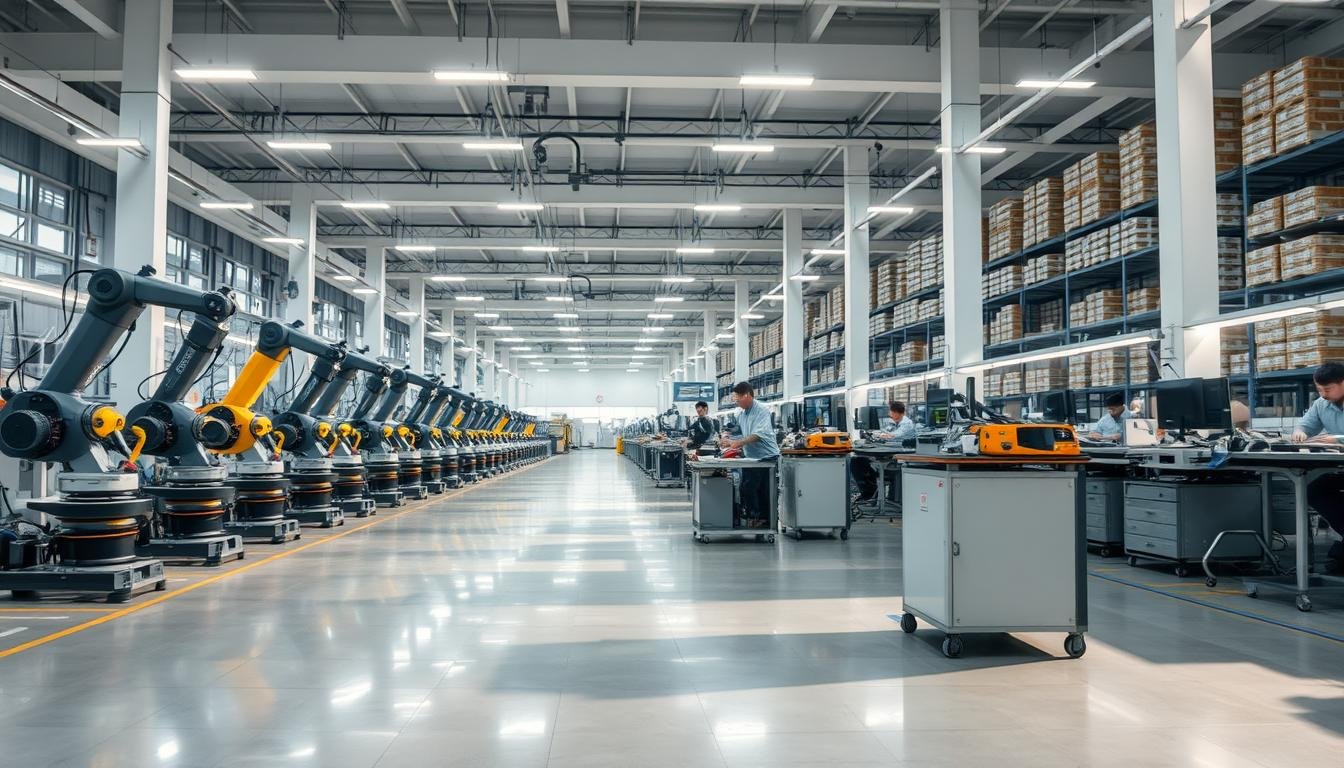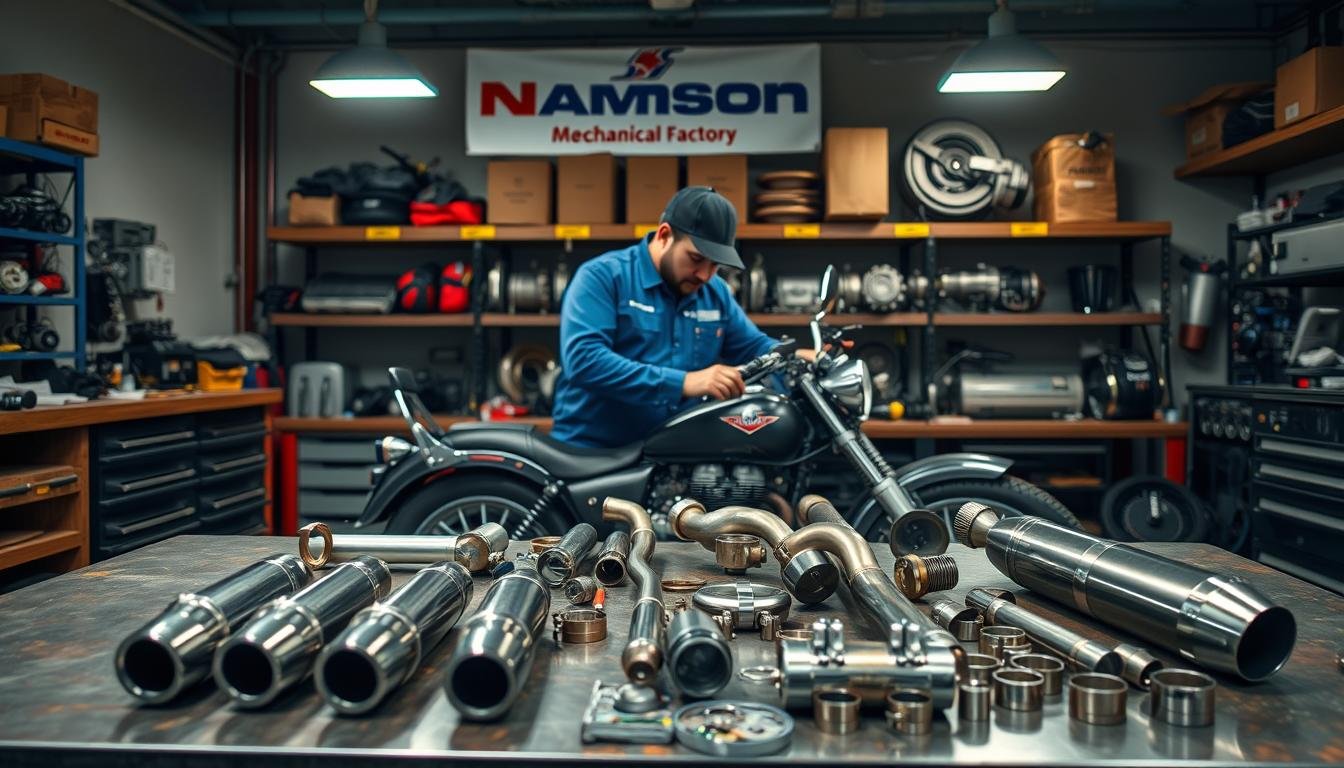Vietnam is now a top spot for outsourcing, especially in mechanical manufacturing. Companies all over the world are moving to Vietnam to make their businesses better. They find it offers affordable offshore production without sacrificing quality.
Vietnam is perfectly located in Southeast Asia, with modern infrastructure and a stable government. This makes it a great place for global businesses. Its talented workers and friendly policies draw in companies looking for dependable mechanical engineering solutions. This makes Vietnam a top pick for outsourcing, helping businesses save money and work more efficiently.
Key Takeaways
- Vietnam leads in mechanical outsourcing, offering competitive cost advantages.
- Modern infrastructure supports seamless offshore production operations.
- Business efficiency improves through Vietnam’s skilled labor and advanced manufacturing capabilities.
- Strategic location enhances supply chain flexibility for global markets.
- International quality standards ensure reliable mechanical engineering outcomes.
The Rise of Outsourcing Vietnam for Mechanical Manufacturing
Vietnam is becoming a top choice for global industries looking for reliable manufacturing partners. The country’s Vietnam manufacturing growth has skyrocketed thanks to smart investments and top-notch mechanical engineering Vietnam practices. Big names like Toyota and Siemens have set up shop here, proving the sector’s growth.
Vietnam’s Growing Reputation in Global Manufacturing
Now, over 30% of Vietnam’s exports are mechanical products. This change highlights the country’s precision engineering progress and partnerships with worldwide companies. The U.S. is increasingly turning to Vietnam for auto and electronics parts, boosting its industrial development status.
Key Mechanical Engineering Capabilities
- Precision machining for aerospace and medical devices
- Automotive component fabrication for global OEMs
- Advanced robotics integration in production lines
- Custom tooling and CNC machining services
Development of Technical Expertise in Vietnamese Workforce
Schools like Da Nang University of Technology focus on training engineers in mechanical engineering Vietnam. Programs focus on Vietnamese workforce skills in automation and CAD design. Companies like Foxconn and Samsung work with these schools to make sure the curriculum meets industry needs, ensuring a steady supply of skilled technicians.
Cost Advantages of Vietnamese Mechanical Outsourcing
Manufacturing in Vietnam is cheaper thanks to its Vietnam cost efficiency model. Companies save up to 30% compared to the U.S. and 15% compared to China. The cost of labor in Vietnam is very low, with skilled workers earning $3.50 an hour. This makes prices competitive for global supply chains.
- Labor costs Vietnam are 40% lower than Thailand and 25% below Indonesia.
- Utilities and land leasing in industrial zones are 20-30% cheaper than regional rivals.
- Tax incentives for foreign investors, including corporate tax breaks and import duty exemptions, reduce total operational expenses.

Operational efficiency in Vietnam is improved by better logistics. Its ports and location near China and ASEAN markets cut shipping times by 2-3 days. Now, 60% of mechanical parts are made locally, lowering import costs. U.S. companies save 25-35% on machinery production thanks to these benefits. Vietnam also focuses on making processes more efficient, ensuring quality without raising prices.
Quality and Innovation in Vietnam’s Mechanical Industry
Global companies trust Vietnam’s mechanical sector for both affordability and excellence. Vietnam focuses on quality standards and advanced manufacturing technology. This ensures top-tier output. An image illustrating this balance follows below.
Quality Control Systems and International Standards
Leading manufacturers adopt ISO certification Vietnam to meet global benchmarks. Certifications like ISO 9001, AS9100, and IATF 16949 ensure compliance with U.S. and EU norms. State-of-the-art testing labs and staff training programs guarantee consistent quality.
These systems align with Vietnam quality standards, reducing defects and enhancing reliability.
Technological Adoption and Innovation Hubs
Innovation hubs like Saigon Hi-Tech Park drive mechanical innovation. Factories integrate Industry 4.0 Vietnam solutions, including automation and smart systems. Key advancements include:
- Automated production lines
- AI-driven quality inspections
- Cloud-based supply chain management
These technologies, part of modern manufacturing technology, cut waste while boosting precision.
Success Stories: American Companies Outsourcing to Vietnam
American firms like Intel, GE, and Jabil report measurable gains. Intel slashed defects by 30% through Vietnam’s quality protocols. GE cut costs by 25% without sacrificing quality.
Jabil’s use of Industry 4.0 Vietnam boosted efficiency by 40%. These outcomes prove Vietnam’s capacity to blend cost efficiency with global standards.
Strategic Benefits Beyond Cost Savings

Outsourcing to Vietnam brings more than just cost savings. It offers several key advantages:
| Benefit | Details |
|---|---|
| Market Diversification | Access to 600M+ consumers via CPTPP and ASEAN networks |
| Supply Chain Resilience | Multiple ports and logistics hubs reduce disruption risks |
| Asian Market Access | Trade agreements like CPTPP open doors to high-growth regions |
| Manufacturing Flexibility | Production can expand/contract quickly to match demand |
| Vietnam-US Trade Relations | Preferential tariffs and stable diplomatic ties under CPTPP |
Vietnam’s manufacturing flexibility allows businesses to quickly adjust production. The CPTPP agreement strengthens Vietnam-US trade relations by cutting import barriers. This setup supports supply chain resilience, helping companies efficiently serve Asian markets.
With 30% of U.S. firms already benefiting, strategic partnerships in Vietnam offer a path to long-term success.
Conclusion: Maximizing Your Business Potential Through Vietnamese Outsourcing
Vietnam is becoming a top choice for mechanical outsourcing. It offers both cost savings and technical skills. For U.S. businesses, working with Vietnamese manufacturers can make them more competitive globally.
By teaming up with Vietnam, companies get access to skilled workers, modern facilities, and a great location for Asia-Pacific markets. This helps them achieve their long-term goals in outsourcing. It lets them save money while still producing high-quality products.
For successful global manufacturing, you need to be quick and forward-thinking. Vietnam is all about innovation and follows international quality standards. This means partnerships there can give you a real edge.
Companies like Boeing and General Electric have already seen the benefits of working with Vietnamese suppliers. As Vietnam’s technical setup improves, those who start early will get the best access to resources and expertise. This puts them ahead of their rivals.
Creating a partnership needs careful planning. Look for suppliers with ISO 9001 certification to ensure quality. Use Vietnam’s English-speaking engineers to make communication easier. Set clear goals for production and quality to make outsourcing a strategic advantage, not just a way to save money.
The time to start is now. Vietnam’s manufacturing sector is ready to change global supply chains. By being proactive, your business can stay ahead of the curve.
FAQ
What are the main advantages of outsourcing mechanical manufacturing to Vietnam?
Outsourcing to Vietnam brings many benefits. It saves money because of lower labor and operational costs. It also offers access to a skilled workforce and established manufacturing capabilities. Plus, Vietnam’s location in Southeast Asia makes it easy to ship products to both local and international markets.
How does Vietnam ensure quality in mechanical manufacturing?
Vietnam ensures quality through strict quality control systems. It follows international standards like ISO 9001 and IATF 16949. Manufacturers use advanced testing tools and training to meet global quality expectations.
Are there specific industries within mechanical manufacturing that Vietnam excels in?
Yes, Vietnam shines in precision machining, metal fabrication, and making automotive parts and industrial equipment. This focus helps American companies find the right partners for their mechanical projects.
What role does the Vietnamese government play in supporting manufacturing?
The Vietnamese government supports manufacturing with tax incentives, special economic zones, and free trade agreements. These efforts make Vietnam a great place for foreign investment and growth in mechanical manufacturing.
How does outsourcing to Vietnam impact overall supply chain resilience?
Outsourcing to Vietnam boosts supply chain resilience by adding diversity and reducing reliance on traditional hubs. Vietnam’s growing manufacturing scene helps companies quickly adjust to market changes and maintain flexible production levels.
Can you provide examples of successful American companies that outsource to Vietnam?
Many American giants, like Intel, GE, and Jabil, have outsourced to Vietnam. They’ve seen big savings, better product quality, and improved efficiency through their partnerships in Vietnam.




